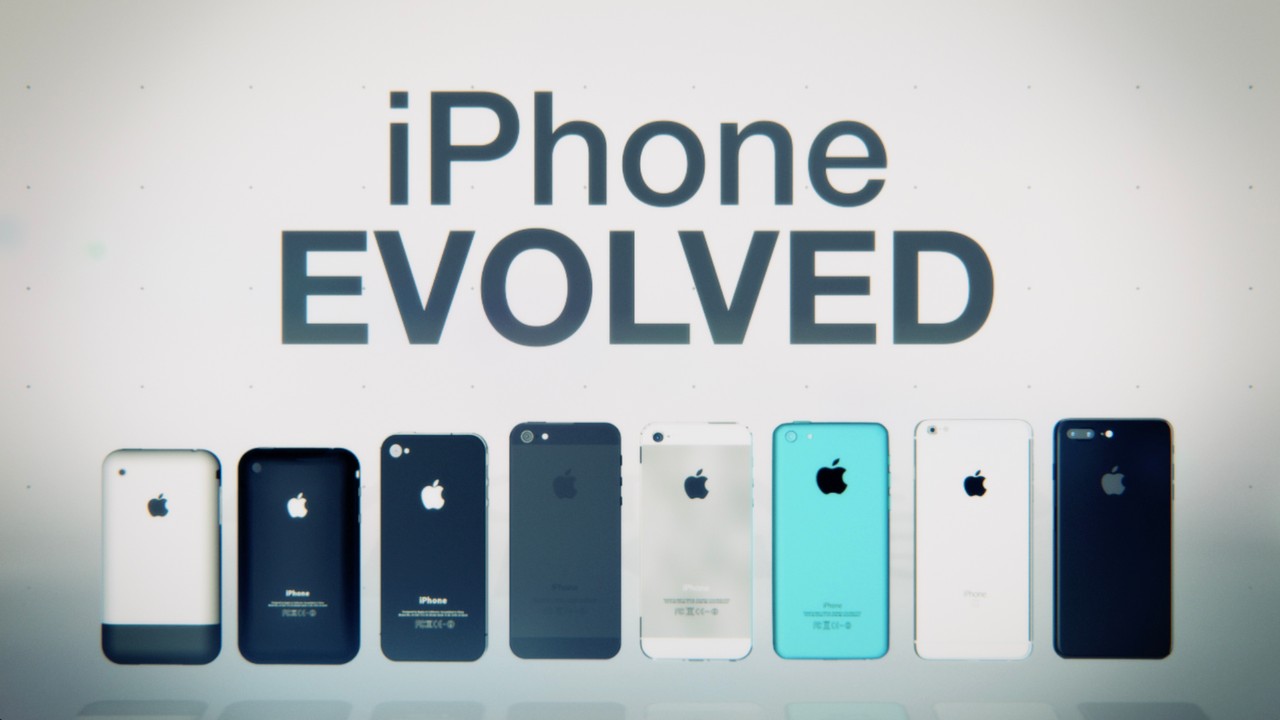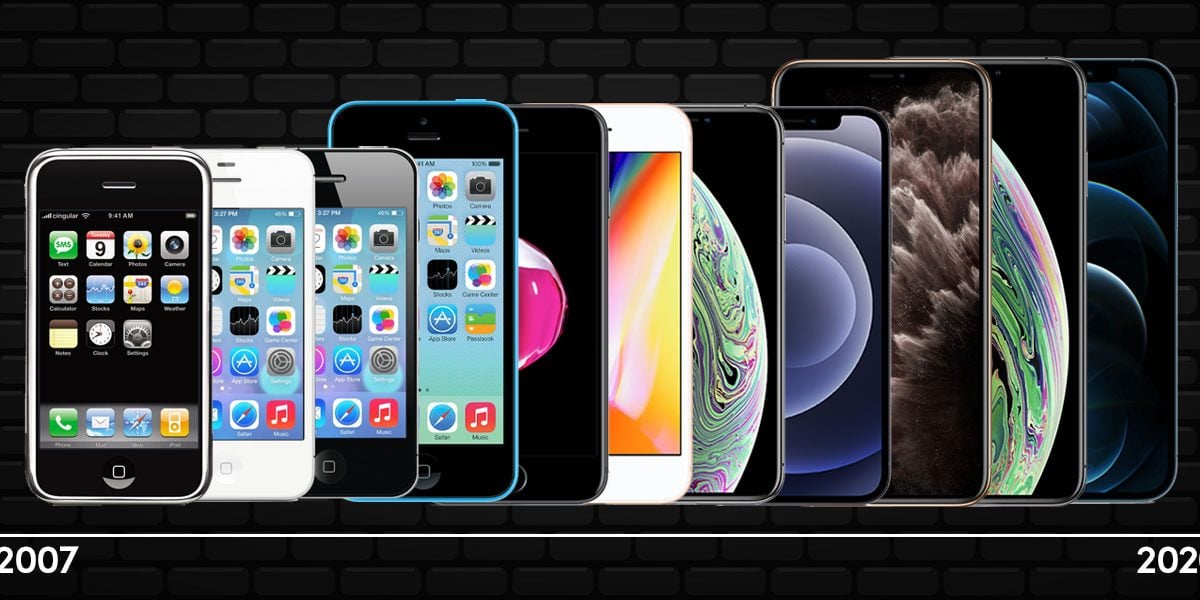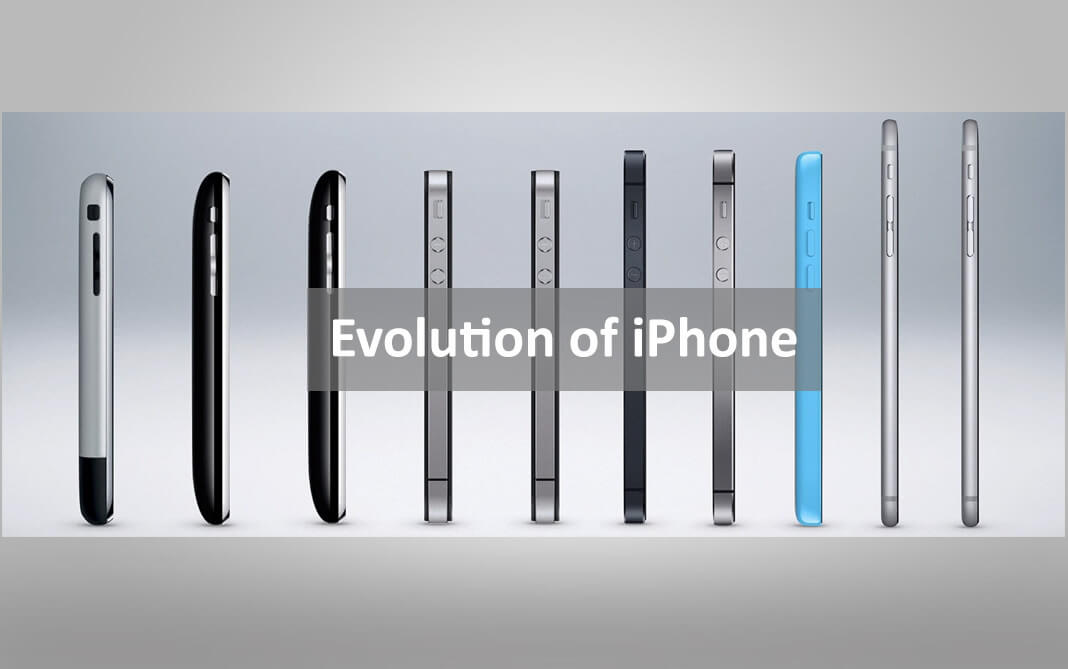The Evolution of the iPhone’s Video Capabilities: A Journey from Simple to Sophisticated
Related Articles: The Evolution of the iPhone’s Video Capabilities: A Journey from Simple to Sophisticated
Introduction
In this auspicious occasion, we are delighted to delve into the intriguing topic related to The Evolution of the iPhone’s Video Capabilities: A Journey from Simple to Sophisticated. Let’s weave interesting information and offer fresh perspectives to the readers.
Table of Content
The Evolution of the iPhone’s Video Capabilities: A Journey from Simple to Sophisticated

The iPhone, since its inception, has been lauded for its sleek design, intuitive interface, and powerful processing capabilities. However, one of the key features that has consistently driven its popularity is its exceptional camera system. While still photography has been a central focus, the iPhone’s video recording prowess has undergone a remarkable evolution, transforming it from a basic recording tool to a powerful cinematic instrument. This journey is best understood by examining the advancements in both the front-facing and rear-facing cameras, understanding their individual strengths and how they complement each other.
The Front-Facing Camera: A Gateway to Self-Expression and Connection
The front-facing camera, often referred to as the "selfie camera," has played a pivotal role in shaping how we interact with technology and communicate with others. Initially, these cameras were primarily used for basic video calls and capturing quick self-portraits. However, as technology advanced, they evolved into versatile tools for video blogging, live streaming, and even professional-grade filmmaking.
Early Days: Basic Video Calls and Casual Selfies
The first iPhones featured rudimentary front-facing cameras designed primarily for video calls. These cameras lacked the resolution and image quality of their rear-facing counterparts, producing grainy footage with limited detail. While sufficient for basic communication, these early cameras lacked the capabilities for creative video capture.
The Rise of the Selfie: A Cultural Shift
The introduction of higher-resolution front-facing cameras, coupled with the increasing popularity of social media platforms, marked a turning point in the use of the front-facing camera. The ability to capture clear and detailed self-portraits sparked a cultural phenomenon, with the "selfie" becoming an integral part of online communication.
Beyond the Selfie: Video Blogging and Live Streaming
As the resolution and image quality of front-facing cameras continued to improve, they became ideal tools for video blogging and live streaming. The ability to capture high-quality video with a wide field of view, often accompanied by features like portrait mode and beauty filters, allowed individuals to create engaging content and share their experiences in real-time.
The Front-Facing Camera’s Cinematic Potential
Modern iPhones boast front-facing cameras that rival the quality of many dedicated video cameras. With features like high dynamic range (HDR), slow-motion video recording, and advanced noise reduction algorithms, these cameras enable users to produce professional-looking video content. The ability to record video in 4K resolution at high frame rates further enhances the cinematic potential of the front-facing camera, opening up new possibilities for creative expression.
The Rear-Facing Camera: Capturing the World Around Us
The rear-facing camera, the primary lens for capturing photos and videos, has undergone an even more dramatic evolution, transforming the iPhone into a portable filmmaking studio. From basic recording tools to sophisticated image capture systems, the rear-facing camera has consistently pushed the boundaries of what is possible with mobile video recording.
Early Days: A Stepping Stone to Advanced Capabilities
The early iPhones featured single rear-facing cameras capable of capturing basic video footage. While these cameras provided a valuable tool for capturing everyday moments, their limitations in terms of resolution, image quality, and features restricted their creative potential.
The Introduction of Multiple Lenses: Expanding Creative Possibilities
The introduction of multiple rear-facing cameras, starting with the iPhone 7 Plus, marked a significant leap forward. The inclusion of a telephoto lens alongside the standard wide-angle lens enabled users to capture a wider range of perspectives and zoom in on distant subjects without sacrificing image quality. This innovation opened up new creative possibilities for video recording, allowing for more dynamic compositions and cinematic effects.
The Rise of Computational Photography: Enhancing Image Quality
The advent of computational photography, which utilizes advanced algorithms and processing power to enhance image quality, further revolutionized the iPhone’s video capabilities. Features like HDR, noise reduction, and image stabilization, enabled by these algorithms, resulted in video footage with greater detail, clarity, and a more cinematic look.
The Future of iPhone Video: Pushing the Boundaries of Mobile Filmmaking
As technology continues to advance, the iPhone’s video capabilities are poised to become even more sophisticated. Improvements in image sensors, lens technology, and processing power are expected to deliver even higher resolution, wider dynamic range, and more advanced features, blurring the lines between professional filmmaking equipment and mobile devices.
The Importance of iPhone Video: A Powerful Tool for Communication and Storytelling
The iPhone’s video capabilities have become a powerful tool for communication and storytelling. From documenting personal experiences to creating professional-quality video content, these cameras empower individuals to share their stories and connect with others in meaningful ways. The accessibility and versatility of the iPhone’s video capabilities have democratized filmmaking, allowing anyone with a smartphone to create compelling and engaging content.
FAQs: Understanding the iPhone’s Video Capabilities
Q: What is the difference between the front-facing and rear-facing cameras?
A: The front-facing camera is primarily designed for capturing self-portraits and video calls, while the rear-facing camera is the main lens for capturing photos and videos of the world around you. The rear-facing camera typically offers higher resolution, better image quality, and a wider range of features.
Q: What are the key features of the iPhone’s video cameras?
A: Key features include:
- Resolution: Modern iPhones offer video recording in 4K resolution at high frame rates, capturing exceptional detail and clarity.
- HDR: High dynamic range (HDR) technology captures a wider range of light and shadow detail, resulting in more balanced and realistic video footage.
- Image Stabilization: Image stabilization helps to reduce camera shake, resulting in smoother and more professional-looking video.
- Slow-Motion Video: The ability to record slow-motion video allows for capturing fast-paced action and creating visually stunning effects.
- Portrait Mode: Portrait mode creates a shallow depth of field effect, blurring the background and focusing attention on the subject, adding a cinematic touch to video footage.
Q: How can I improve the quality of my iPhone videos?
A: Here are some tips for improving your iPhone video quality:
- Use Natural Lighting: Shoot your videos in well-lit environments, avoiding harsh shadows or excessive backlighting.
- Stabilize Your Camera: Use a tripod or stabilizer to prevent camera shake and create smooth video footage.
- Keep Your Subject in Focus: Ensure that your subject is clearly in focus and properly framed within the shot.
- Experiment with Different Angles: Try different camera angles and perspectives to add visual interest to your videos.
- Edit Your Videos: Use editing software to enhance your videos by trimming, adding music, and applying visual effects.
Q: What are some of the best apps for editing iPhone videos?
A: Popular video editing apps for iPhone include:
- iMovie: A user-friendly app with a wide range of editing tools, suitable for beginners.
- LumaFusion: A more advanced app with professional-grade features, ideal for experienced editors.
- Adobe Premiere Rush: A powerful and versatile app with a cloud-based workflow for seamless collaboration.
- FilmoraGo: A user-friendly app with a wide range of templates and effects for creating engaging videos.
Conclusion: The iPhone’s Video Capabilities – A Catalyst for Creativity
The iPhone’s video capabilities have transformed the way we capture and share our experiences. From simple video calls to professional-quality filmmaking, the front-facing and rear-facing cameras have become integral tools for communication, storytelling, and creative expression. As technology continues to evolve, the iPhone’s video capabilities are poised to become even more sophisticated, pushing the boundaries of mobile filmmaking and empowering individuals to create compelling and engaging content. The iPhone’s video journey is a testament to the power of innovation and the transformative impact of technology on our lives.




![iPhone Evolution Timeline 2007-2022 / iOS Evolution [Graphic] in 2022 Iphone, Ios features](https://i.pinimg.com/736x/3b/4b/bd/3b4bbdc2b4dafca52898b380d420fe10.jpg)



Closure
Thus, we hope this article has provided valuable insights into The Evolution of the iPhone’s Video Capabilities: A Journey from Simple to Sophisticated. We hope you find this article informative and beneficial. See you in our next article!
